Kingdom Animalia Scientific name Vampyrum spectrum Higher classification Vampyrum Order Bat | Family Phyllostomidae Phylum Chordata Rank Species | |
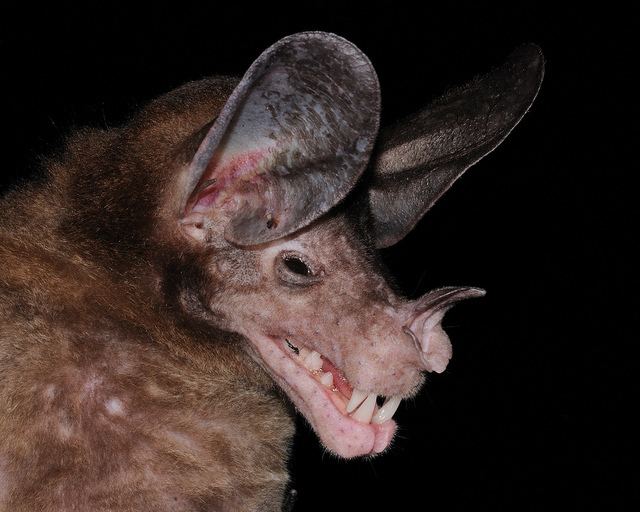 | ||
Genus Vampyrum
Rafinesque, 1815 Similar Bat, Big‑eared woolly bat, Phyllostomus, Fringe‑lipped bat, Micronycteris | ||
The genus Vampyrum contains only one species, the spectral bat (Vampyrum spectrum). Some alternate names for this species are the false vampire bat, Linnaeus's false vampire bat and the spectral vampire bat. Confusingly, they are not related to the Old World family of large carnivorous bats to be found in the Megadermatidae that are also called false vampires.
Contents
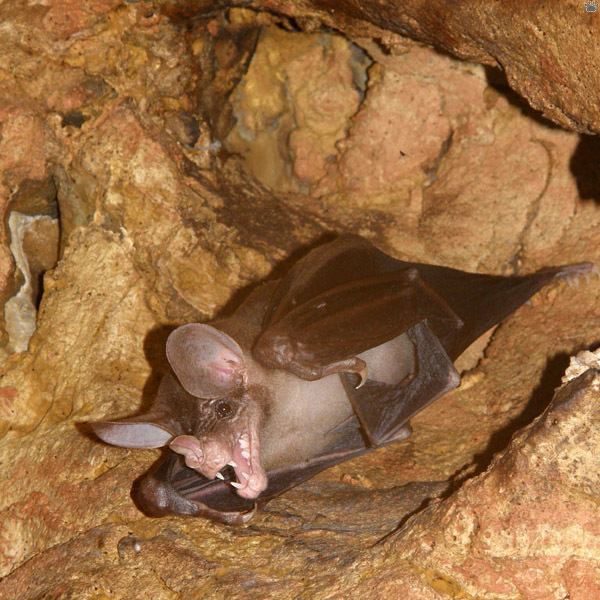
Description
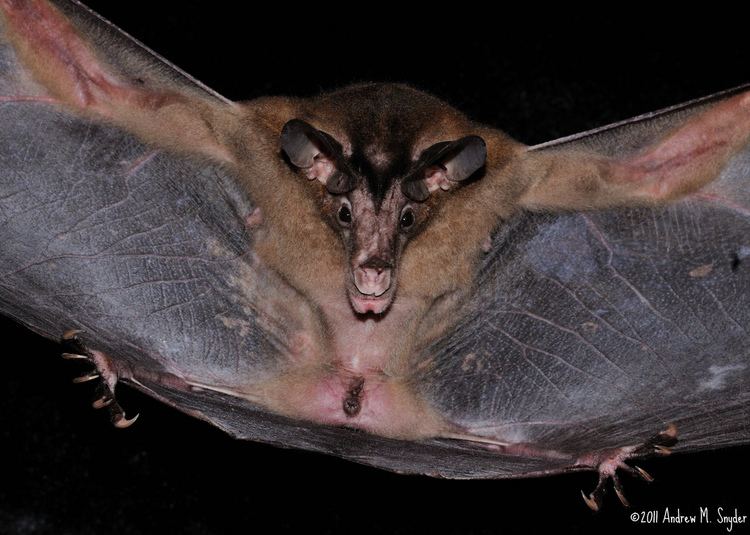
This species is the largest bat (Chiroptera) native to the New World and the largest carnivorous bat in the world. The wingspan typically ranges from 60 to 91.5 cm (23.6 to 36.0 in), with the largest specimens attaining just over 100 cm (39 in). The length is 12.5–13.5 cm (4.9–5.3 in) (there is no tail) and body mass is 145–190 g (5.1–6.7 oz). The fur on the upper parts of the bat is normally dark brown, chestnut brown or rust-orange and quite short and fine. The ears are very long and rounded. There is no discernible tail, but the tail membrane is long and broad. The large feet are robust, with long curved claws. The muzzle is long and narrow, and the teeth are strong. The noseleaf, averaging 1.7 cm (0.67 in) long, is medium-sized, lance-shaped, horseshoe and spear with continuous rim raised to form a hollow cup around the nostrils. Underparts are usually pale, dirty gray-brown to yellow-brown – the fur is much shorter than on the front.
Range and habitat

The range of the species is southern Mexico to Peru and Ecuador to central and northern Brazil, Suriname, Guyana, and the island of Trinidad. These bats are typically found roosting, usually on tree branches, but sometimes in hollow trees or even man-made structures, in dense, lowland neotropical forests, below an elevation of 1,650 m (5,410 ft). They are found in the greatest numbers in riparian areas. While foraging, they visit more diverse habitats and can be found in moist, evergreen forest, yards, secondary growth woodlands, forest edges, and muggy areas.
Feeding
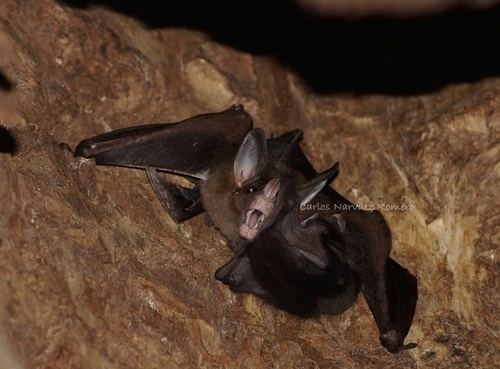
The spectral bat is a formidable aerial night hunter. While true vampire bats, for which it was formerly named, parasitically feed on the blood of larger animals, often as they sleep and usually with little ill effect, this species rather actively hunts and kills other animals. This large predatory species primarily lives on relatively large vertebrate prey, such as small birds, small mammals (including other species of bats) and occasionally amphibians and reptiles. Prey usually lives or gathers in groups, has a strong odor and typically roosts on branches rather than in cavities. Most prey selected weighs from 20 to 150 g (0.71 to 5.29 oz), which is equal to their own weight. The remains of 84 bird specimens of 18 different species, including motmots, doves, trogons, cuckoos, wrens and orioles, were discovered at one spectral bat roost. Insects are also included in the diet, especially large crickets, cicadas, etc.
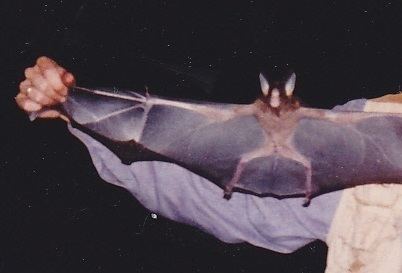
When hunting, this species is extremely stealthy. Their characteristic flight is slow and low to the ground. They can appear bouncy but are actually quite maneuverable fliers. It will often actively stalk their prey and then pounce from a position on an above branch onto its prey or, in an owl-like fashion, hunt by patrolling back and forth along forest edges, suddenly dropping on something in the grass. Spectral bats do not seem to forage by sight or echolocation as do most bats, but apparently hunt so mainly by scent. However, they have been recorded as being attracted to the stress calls of smaller bats while hunting. Their wing structure allows them to take flight in confined spaces and to carry heavy prey items. These bats were once thought to supplement their diet with fruit, but a captive pair refused to eat any fruit over a 5-year period. Spectral bats usually hunt several times a night and, during the breeding season, the male will hunt for food alone and bring food back to the female and their young.
Life history
Spectral bats usually roost in a hollow tree with a mate and their young of the year. Little data is available on the breeding details of the species, though births have been observed from May to July, at the onset of the rainy season. One young or pup is usually produced each year, though up to three have been recorded. The mother is reportedly very attentive and gentle with her offspring. The male is often in attendance as well and will frequently sleep with both the female and their young completely wrapped up in his wings. Pairs may mate for life. Young spectral bats may be predated by arboreal predators such as tree snakes, coatis and Leopardus cats. Adults may be killed in flight by owls. At this point, the little-known spectral bat is classified as near threatened, due only to its apparent dependency on mature forest, which is being heavily logged in some parts of the species range.
